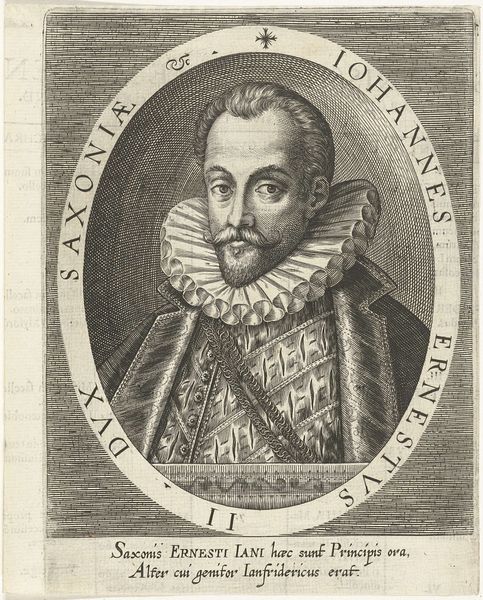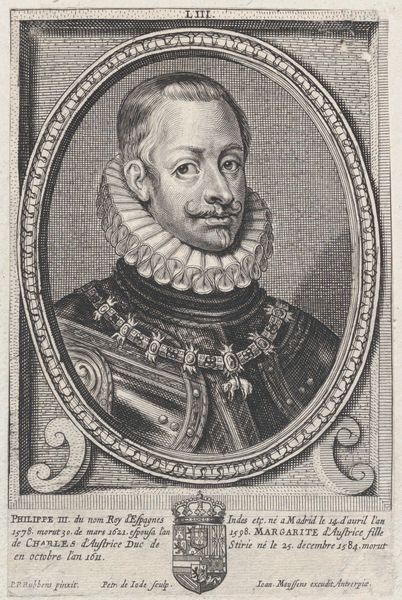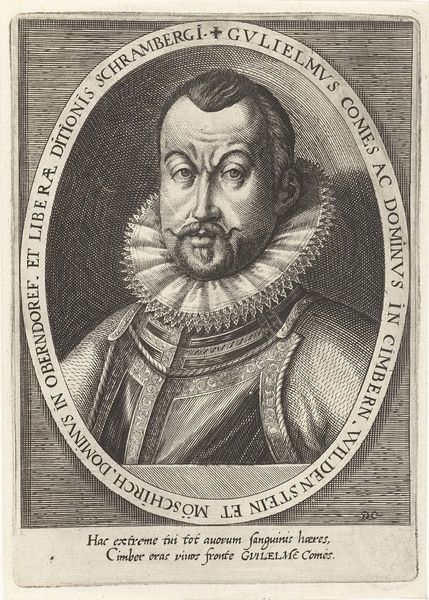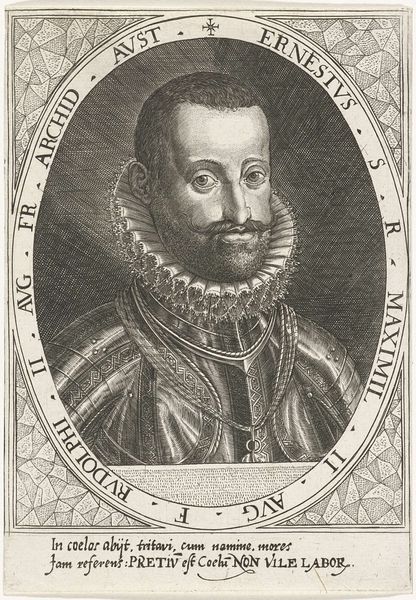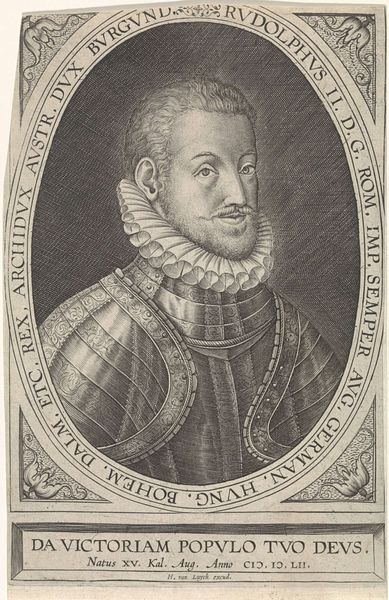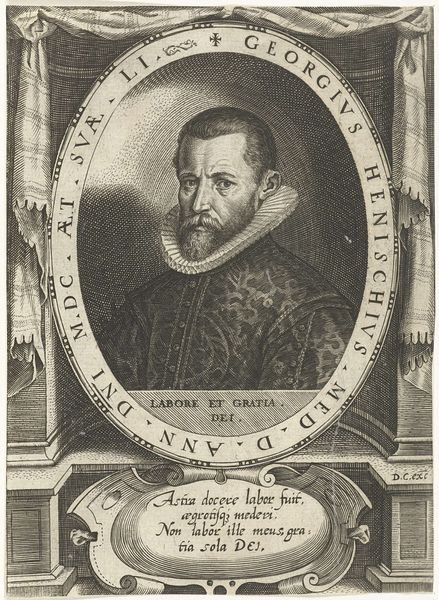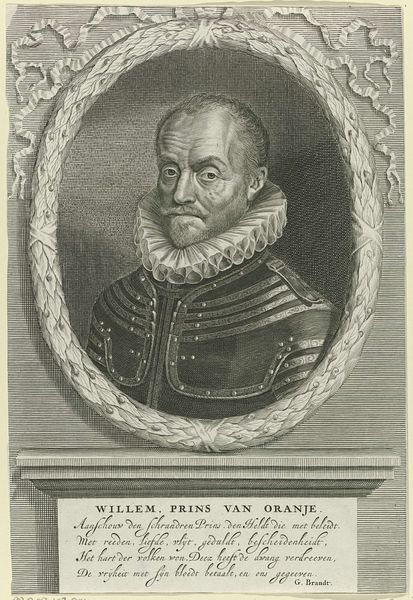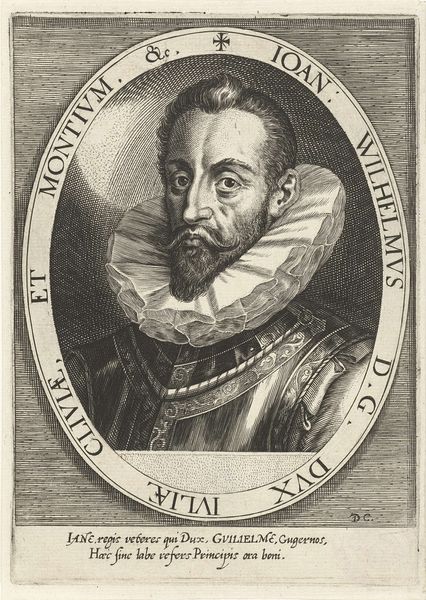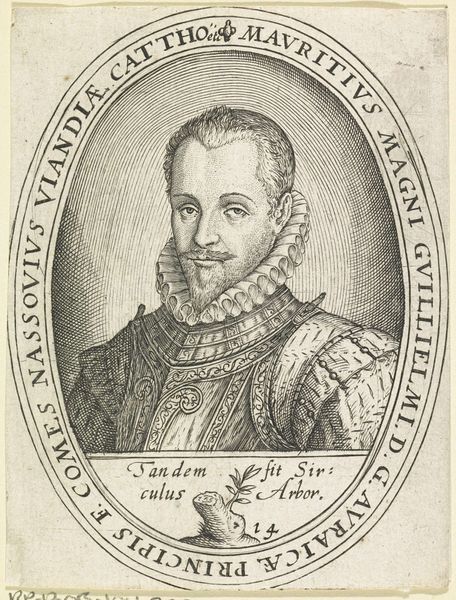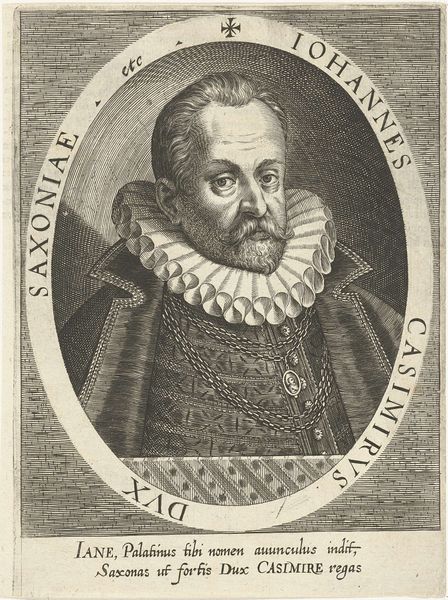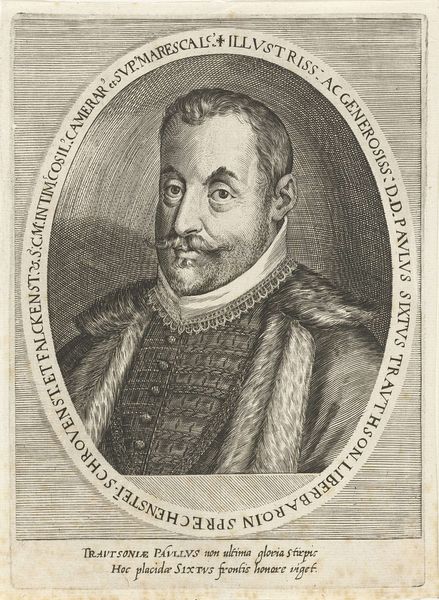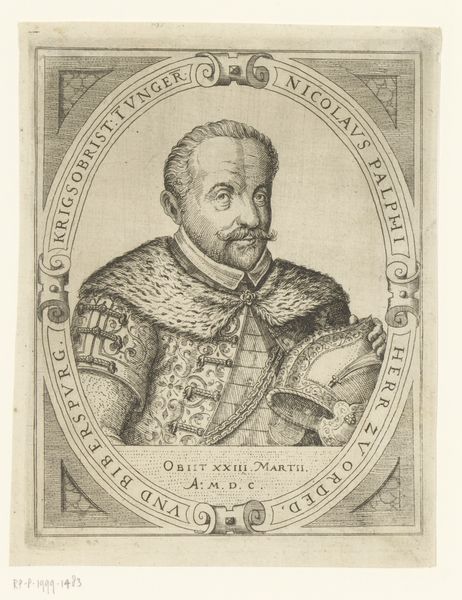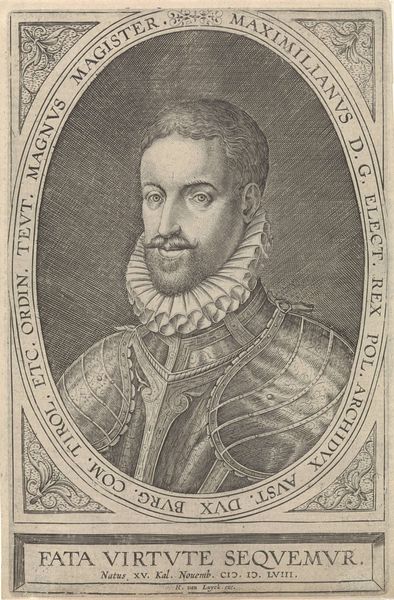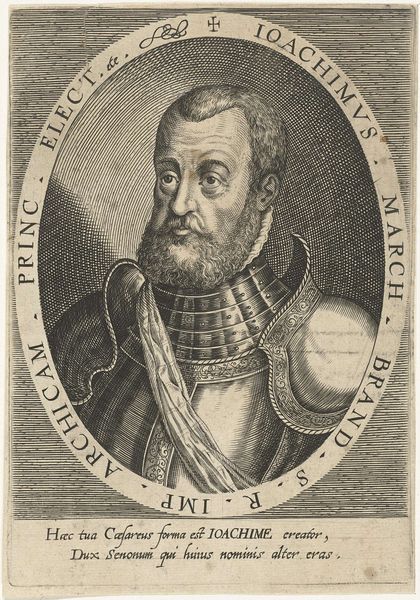
print, engraving
#
portrait
#
baroque
# print
#
old engraving style
#
portrait reference
#
history-painting
#
engraving
Dimensions: height 180 mm, width 132 mm
Copyright: Rijks Museum: Open Domain
Curator: This engraving, housed at the Rijksmuseum, offers us a portrait of Johan II, Duke of Saxony. It's attributed to Dominicus Custos, created after 1601. The details are just astonishing. Editor: It has a certain gravitas, doesn't it? The meticulousness of the engraving technique really shines through, especially in rendering the ruff and the patterned fabric of his doublet. You can almost feel the starch in the linen and the weight of that chain. Curator: Absolutely. Think of the socio-political implications embedded here! Portraiture, particularly of rulers, served a vital function. It wasn’t simply about likeness; it was about conveying power, legitimacy, and status to audiences far and wide. Prints like this circulated widely. Editor: Indeed. And consider the labour involved. Each line, etched and printed, represents hours of skilled craftsmanship. Engravings like these played a key role in disseminating images and information—a pre-digital means of mass production, if you will. It is like creating art through labor-intensive mechanical reproduction for social and historical records. Curator: Precisely. Disseminating and also solidifying it, right? Think about the impact a carefully crafted image could have on shaping public perception of a leader like Johan II. Were the commissioning the art? Is this a form of propagandizing? Editor: No question. And who consumed these prints? What kind of access to images did the burgeoning middle class now have? These engravings offer a tangible connection to the political and cultural climate of the time, demonstrating the complex intersection between art, society, and technology. How images became crucial within new consumer habits. Curator: I see him now not only as a duke, but a product of sophisticated production of its time. A symbolic power, but also accessible for common folks who crave political authority from image consumption. Editor: This is just a quick glimpse. Digging in the cultural values from a labor and societal perspective reveals all kinds of angles to understanding a seemingly traditional portrait! Curator: Absolutely, and it enriches our comprehension of not just the Duke but also the period’s machinery that elevated this Duke!
Comments
No comments
Be the first to comment and join the conversation on the ultimate creative platform.
